Amateur astronomers were given a rare treat on Sunday when asteroid 2002 NY40 passed within 530,000 kilometres of the Earth (a little further than the distance from Earth to the Moon). Over the course of a few hours, the 800 metre space rock passed through several constellations in the night sky, visible in binoculars or a small telescope. 2002 NY40 is of minor concern as astronomers believe there is a 1/500,000 chance it could strike the Earth in 2022 – the flyby will give them an opportunity to better calculate its future path.
NASA Loses Comet Chasing Spacecraft
NASA scientists haven’t given up hope in their search for the missing Contour spacecraft, which disappeared shortly after it was supposed to fire its thrusters on Thursday. A telescope captured an image of two separate objects, moving in the direction Contour was supposed to be headed, leading to speculation that the spacecraft broke in two, but this hasn’t been confirmed yet. Had it worked properly, Contour would now be on its way to meet up with two comets to take high resolution photos of their nuclei.
Evidence Found for Early Earth Bombardment
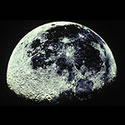
Image credit: NASA
Researchers from the University of Queensland have discovered evidence they believe proves that the Earth was bombarded by meteorites 4 billion years ago. Although these impacts are clearly visible on the Moon, movement the Earth’s tectonic plates have obscured the evidence here. The team analyzed 3.8 billion year old rocks from Greenland, and found anomalies in the element tungsten; exactly the same as those found in meteorites.
University of Queensland researchers have for the first time discovered terrestrial evidence of a meteorite bombardment nearly 4 billion years ago.
It is widely accepted that the moon was heavily bombarded at this time, creating huge craters and basins. But although the effect of these impacts is still clearly visible on the moon today, movement of Earth?s dynamic plates over geological time have reshaped the terrestrial surface dramatically, leaving little evidence of these catastrophic events.
In a paper published in the international journal Nature, UQ researchers report evidence of the oldest impact events so far discovered on Earth.
The research team of Dr Ronny Schoenberg, Dr Balz Kamber and Professor Ken Collerson of UQ?s new Advanced Centre for Isotope Research Excellence (ACQUIRE) made the discovery by analysing 3.8 billion year old rocks from West Greenland collected by Oxford University collaborator Professor Stephen Moorbath and from Northern Labrador in Canada collected by Professor Collerson.
The researchers found these very old metamorphosed sedimentary rocks ? derived from the Earth?s early crust ? contain anomalies in the isotope composition of the element tungsten.
?Such anomalies are usually found in meteorites. To our knowledge, this is the first time these anomalies have been shown to exist in terrestrial samples? Professor Collerson said.
?There is no plausible mechanism by which tungsten isotope anomalies could have been preserved in the Earth?s dynamic crust-mantle environment. Therefore, we conclude these rocks must contain a compound derived from meteorites.?
?We have in effect found a chemical fingerprint in the earth?s oldest terrestrial rocks of a heavy meteorite bombardment 3.8 to 4 billion years ago,? he said.
?This finding has implications for the origin of life on earth as these giant impacts would have annihilated any possible existing life forms but also delivered complex molecules from carbonaceous chondrites – a type of meteorite – to the earth?s surface,? Dr. Kamber added.
?Further research on this unique collection of rocks will yield insight into the evolution of life on Earth provided provision of adequate research funding,? Professor Collerson said.
Original Source: UQ News Release
Keeping Mars Clean of Earth Bugs
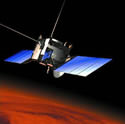
Image credit: ESA
One concern engineers have when designing space missions is how to ensure our spacecraft don’t bring along unexpected microorganisms when they reach a distant planet. There are strict international rules to avoid contamination, so engineers use several techniques to keep their spacecraft clean: sterilization through heat, vacuum, alcohol, irradiation with ultraviolet light and other kinds of radiation. Once they’re done, engineers hope to have less than 300,000 microorganisms in the Beagle 2, due for launch in 2003. That sounds like a lot, but there are several billion wee beasties on even the cleanest kitchen floor.
When packing for a trip towards another planet, there are some things, such as microorganisms, that you do not want to include in your ‘luggage’. For example, what if extraterrestial life is finally detected on Mars, and scientists realise afterwards that such life is actually terrestrial?
Fortunately, there are strict international rules to avoid the contamination of Solar System bodies with biological material from Earth. Landers, for example, may present a special danger to the objects they set down on. The European Space Agency (ESA) is well aware of this. ESA’s missions, such as Mars Express, with its lander Beagle 2, Rosetta, which will land on a comet, and Cassini-Huygens, headed towards Saturn and its moon Titan, will be ‘clean’ and responsible visitors. The strictest of procedures will ensure that they carry only highly sterilised landers.
Cassini (with Huygens on-board) left Earth in 1997 and is travelling towards the planet Saturn. In 2004, Huygens will separate from the spacecraft and land on its own on Saturn’s largest moon, Titan. Titan is a highly promising site for the scientists because its atmosphere very much resembles that of primitive Earth. It is a very cold place, with temperatures down to -180?C. Many scientists think such freezing temperatures are precisely the reason why life never arose on Titan. However, Huygens may well give them reasons to reconsider.
Rosetta and Mars Express will be launched in 2003. Rosetta is ESA’s comet-chaser. It will spend 8 years travelling through the Solar System and in 2011 it will land on Comet 46 P/Wirtanen, making Rosetta the first spacecraft ever to land on a comet. Mars Express is the next mission to Mars and the first European one. It will arrive on the Red Planet in December 2003 and release its lander Beagle 2, whose task, among others, is to search for evidences of Martian life.
These diverse projects all have something in common. They have all had to take into account the ‘planetary protection’ requirements set by the international scientific organisation, Committee on Space Research (COSPAR).
“We don’t want to contaminate the planets we go to,” says John Bennett, of ESA’s Mars Express team and one of the scientists responsible for ‘protecting’ the Red Planet from an undesired terrestrial invasion. “We don’t want future missions to detect contamination, instead of life.”
COSPAR rules determine a spacecraft’s degree of cleanliness. Standards vary depending on both the type of mission and its ‘destiny’. For example, from a contamination point of view, landers are obviously more ‘dangerous’ than orbiters. Moreover, the more likely a planet is considered to bear life, the stricter the requirements are.
For these reasons, rules are especially tough for Mars Express’s lander, Beagle 2. Scientists set sterilisation criteria of 300 microorganisms per square metre for missions to Mars in the past. At this level, no life was detected and they concluded that this sterilisation level would not compromise or affect biological measurements. Beagle 2 will have to be sterilised to contain less than 300 microorganisms per square metre at launch, and no more than 300 000 inside the whole launcher. By comparison, the floor of even the cleanest kitchen inside a house on Earth has several thousands of millions of microorganisms present.
The sterilisation process is quite complicated. Many of the instruments’ components are very delicate and would not withstand very high temperatures, so scientists use different techniques. They will heat most of the components of Beagle 2 to 120?C and clean other components chemically. For the solar panels, for example, an alcohol will be used. The microelectronics components will be placed in a vacuum chamber with a special gas, hydrogen peroxide plasma, that oxidises biological material, making it harmless. Scientists will also use another sterilising technique, irradiation with ultraviolet light and other kinds of radiation. Sterilisation will affect all parts of the lander, even the airbags and the parachute system the lander uses to reach the ground safely.
For Beagle, the process will take place in several facilities in the United Kingdom. Special transportation systems will take each component to a specially built clean room where they will be assembled on location at the Open University site in the United Kingdom. Assembly will begin this summer. Once finished, the ultraclean Beagle 2 will be ‘sealed’ within its own front-shield and back-cover, and made ready to be mounted on Mars Express.
Requirements for Rosetta and Huygens are less strict. When Cassini-Huygens was launched in 1997, scientists thought that life was simply too unlikely to exist on the cold Titan. They therefore labelled the project low risk, with no sterilisation procedures considered necessary. However, according to COSPAR rules, the spacecraft was assembled in a clean room, that is, with less than 100 000 particles per unit of volume.
Rosetta is a similar case. “Sterilisation is generally not crucial since comets are usually regarded as objects where you can find prebiotic molecules, that is, molecules that are precursors of life, but not living microorganisms,” explains Gerhard Schwehm, Rosetta’s Project Scientist. On the other hand, Rosetta has to perform delicate experiments on the comet and scientists do not want the results to be spoiled, so cleanliness is required.
Original Source: ESA News Release
Canadian X-Prize Entrant Moves Closer to Spaceflight
A Canadian team competing to win the $10 million X-Prize announced that they had completed a major milestone on their entrant, the Canadian Arrow. The team performed a successful test burn of their prototype engine and believe it will now work in actual flight – a main engine test could happen as early as August. Twenty one teams from 5 countries are competing for the X-Prize, which will award $10 million to the first group able to launch a three-person rocket twice in two weeks to an altitude of 100 km.
Scramjet Prototype Has a Successful Flight
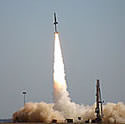
Image credit: University of Queensland
A new jet designed to travel more than 7 times the speed of sound has been successfully tested in the Australian desert. The prototype Hyshot engine is a scramjet; unlike a traditional chemical rocket which carries heavy liquid oxygen in gigantic fuel tanks, a scramjet pulls the oxygen it needs from the atmosphere. The engine was strapped to a traditional rocket and lifted up to an altitude of 300 km at which point the scramjet kicked in and accelerated it towards the Earth – hopefully reaching a speed of 8,600 km/hour before it crashed.
University of Queensland researchers say the launch of the HyShot experiment at the Woomera Prohibited Range today was successful.
?So far it has all gone to plan. The launch was a success, and we received data for the duration of the flight,? said HyShot program team leader Dr Allan Paull.
The aim of the experiment is to achieve the world`s first flight test of air-breathing supersonic ramjet engines, also known as scramjets. These engines could revolutionise the launch of small space payloads, such as communications satellites, by substantially lowering costs.
Today?s launch of a Terrier Orion Mk70 rocket fitted with a scramjet engine took place at 1135 local time (1205 AEST).
Dr Paull said although the signs so far have been positive, it is still too early to say the scramjet experiment has succeeded. The scramjet experiment took place within only the last few seconds of the flight, lasting almost 10 minutes.
?Hopefully we?ll be in a better position to make that assessment in the next couple of days, but at the moment I?m feeling confident,? he said.
?Nevertheless, even at this early stage we have achieved what no else has managed to do, helping put Australia at the forefront on this new technology.
?I would like to thank all consortium partners, in particular the Aircraft Research and Development Unit, Australian Defence (ARDU) and the Defence Science and Technology, Organisation (DSTO).?
Other consortium partners include Astrotech Space Operations, DTI and GASL, QinetiQ, NASA Langley Research Center, Seoul National University, the DLR (German Aerospace Center), NAL (National Aerospace lab. Japan), AFRL (Air Force Research Laboratory, USA), Australian Space Research Institute (ASRI), Institute of Engineers Australia (IEAust), UniQuest and the Australian Department of Defence.
Australian firms, Alesi Technologies, NQEA, AECA, Luxfer Australia and Jet Air Cargo, and BAE Systems Australia are also involved.
Original Source: UQ News Release
Cassini Camera Working Fine Again
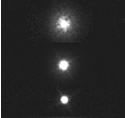
Image credit: NASA
Controllers for the Cassini spacecraft received some good news last week when the latest set of test images came through showing no distortion in its camera system. They became worried last year when haze appeared on the camera after it was heated briefly in a maintenance operation – the haze diffused 70% of the light reaching the camera. Controllers slowly heated and cooled the spacecraft several times, and now the distortion is down to 5%. Cassini will begin orbiting Saturn on July 1, 2004 and it will deliver the piggybacked Huygens probe into the atmosphere of Titan.
Now within two years of reaching Saturn, NASA’s Cassini spacecraft took test images of a star last week that reveal successful results from an extended warming treatment to remove haze that collected on a camera lens last year.
The quality of the new images is virtually the same as star images taken before the haze appeared. In the most recent treatment, the camera had been warmed to 4 degrees Celsius (39 degrees Fahrenheit) for four weeks ending July 9. Four previous treatments at that temperature for varying lengths of time had already removed most of the haze. The camera usually operates at minus 90 C (minus 130 F), one of the temperatures at which test images were taken on July 9 of the star Spica.
“We’re happy with what we’re seeing now,” said Robert Mitchell, Cassini program manager at NASA’s Jet Propulsion Laboratory, Pasadena, Calif. The team will decide in coming weeks whether to proceed with another warming treatment later this year.
Cassini’s narrow-angle camera worked flawlessly for several months before and after a December 2000 flyby of Jupiter. Haze appeared when the camera cooled back to its usual operating temperature after a routine-maintenance heating to 30 C (86F) in mid-2001. Lens hazing from engine exhaust or other sources is always a possibility on interplanetary spacecraft. Planners designed heaters for Cassini’s cameras to cope with just such a situation.
Before treatment, the haze diffused about 70 percent of light coming from a star, by one method of quantifying the problem. Now, the comparable diffusion is about 5 percent, Cassini engineers Charles Avis and Vance Haemmerle report. That’s within one percent of what was seen in images from before the hazing occurred, possibly within the range of statistical noise in the analysis. Comparison images are posted at http://www.jpl.nasa.gov/images/cassinicamera_caption.html.
Additional information about Cassini-Huygens is online at http://saturn.jpl.nasa.gov.
Cassini will begin orbiting Saturn on July 1, 2004, and release its piggybacked Huygens probe about six months later for descent through the thick atmosphere of the moon Titan. Cassini-Huygens is a cooperative mission of NASA, the European Space Agency and the Italian Space Agency. JPL, a division of the California Institute of Technology in Pasadena, manages the mission for NASA’s Office of Space Science, Washington, D.C.
Original Source: NASA/JPL News Release
Proton Rocket Lofts Russian Satellite
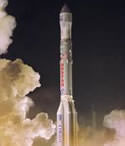
Image credit: ILS
A Russian Proton-K lifted off from the Baikonur Cosmodrome Thursday, carrying a Kosmos 2392 satellite into an elliptical orbit. Although the satellite is believed to be an Arkon-class military satellite, space officials told the Russian press that it would also be used to collect data on the land and oceans.
A Proton launch vehicle successfully launched the Cosmos-3292 satellite today at 7:13 p.m. Moscow time. This was the fourth launch of a Proton this year, including two missions carried under International Launch Services.
The Cosmos-3292 satellite was launched within the framework of the Federal program and will provide remote sensing and environmental monitoring of the Earth.
Original Source: ILS News Release
NASA Could Have a Solution to Get Shuttle Flying Again
NASA announced on Friday that they’re very close to deciding how they’ll fix the tiny cracks discovered in fuel lines of the entire space shuttle fleet. If the plan is approved, workers could begin welding the cracks as early as next week. Although the cracks apparently formed quite a while ago, NASA engineers are concerned that bits of metal could break off from the fuel lines and cause catastrophic damage to the shuttle’s engines. If all goes well, the first shuttle could launch as early as September 26.
NASA Rules Out Asteroid Collision in 2019
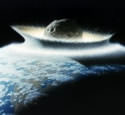
Image credit: NASA
Astronomers announced earlier last week that they had found an asteroid that could strike the Earth in 2019. More astronomers brought their equipment to bear on Asteroid NT7, however, and were able to provide enough trajectory data that NASA has eliminated the possibility of a collision in 2019; although, 2060 could still be a possible impact year (astronomers will probably rule that out eventually too). The asteroid is 2km across, so if it does ever strike the planet, it could cause significant damage.
Asteroid 2002 NT7 currently heads the list on our IMPACT RISKS Page because of a low-probability Earth impact prediction for February 1, 2019. While this prediction is of scientific interest, the probability of impact is not large enough to warrant public concern.
Discovered on July 9, 2002 by the LINEAR team, asteroid 2002 nt7 is in an orbit, which is highly inclined with respect to the Earth’s orbit about the sun and in fact nearly intersects the orbit of the Earth. While the orbits of Earth and 2002NT7 are close to one another at one point in their respective orbits, that does not mean that the asteroid and Earth themselves will get close to one another. Just after an asteroid like 2003 qq47 is discovered, the limited number of observations available do not allow its trajectory to be tightly constrained and the object’s very uncertain future motion often allows a very low probability of an Earth impact at some future date. Just such a low probability impact has been identified for February 1, 2019 and a few subsequent dates. As additional observations of the asteroid are made in the coming months, and perhaps pre-discovery archival observations of this object are identified, the asteroid’s orbit will become more tightly constrained and the future motion of the asteroid will become better defined. By far the most likely scenario is that, with additional data, the possibility of an Earth impact will be eliminated.
This is an example of the type of scenario that we can expect as some types of near-Earth objects are discovered. For some objects, their uncertain initial orbits cannot be used to immediately rule out future very low-probability Earth impacts, but when additional observations are used to refine the initial orbit, these low-probability Earth impact possibilities will go away. Other recently discovered near-Earth asteroids will be added to the Risk page until their orbits are refined and they are then dropped off the list of closely watched objects. This is how the system is expected to work and any initial indication of a low-probability Earth impact followed by a removal of that event from our IMPACT RISKS tables should not be considered a mistake. It is a natural result of the on-going process of monitoring the motions of near-Earth objects.
Original Source: NASA News Release
